

50 Dorp St.
Stellenbosch, South Africa 7600
+27 21 007 4231
https://bertusbasson.com/
Neighborhood: Downtown Stellenbosch
Cuisine: Traditional South African
$$$$ = $75 and less – Fine dining
Five Forks = Sets the standard for fine dining in the region and consistently provides superior quality dining
Hours: Tuesday to Saturday from 7 pm
SPECIAL FEATURES:
Handicap accessible: Yes
Parking: Street, Private Lot
Vegetarian options: Yes
Kid-friendly: No
Liquor served: Wine and Spirits
Wine List: Interesting wine section featuring unusual bottles
Outdoor seating: Yes
Reservations: Yes, highly recommended
Unique: Celebrated South African Chef, Bertus Basson, has a food philosophy rooted in traditional South African food culture with a modern outlook. His commitment to great food made with fresh, in-season local ingredients and acute attention to detail is the key to the culinary success for which he is highly regarded. The chef is also a TV Personality!
During the 2019 fall harvest, Bill and I were visiting with our friends David van Velden, the winemaker at Overgaauw and his wife Nicole. She explained that this restaurant and experience was a must, and wanted to make sure we had a chance to dine here before we headed back to the States. We were sure glad she was able to secure us a reservation in the
“Eike is the expression of one simple idea: Being South African. It celebrates South African cuisine, inspired by childhood memories of classic local dishes and travels through the physical and cultural landscape of our diverse land. It pays homage to the picturesque town of Stellenbosch, the Eikestad or Oak city. This is who we are. Bertus, Mareli, Kyle and Collette.”
Heritage is what informs a lot of Basson’s cooking in all his restaurants, and while tradition forms the foundation for many dishes, they are all elevated by his unique creativity and vision. We were gratified when he took the time and came out to our table to explain his craft.
Our first course, below was called “Samp and Beans Reimagined”
Samp is a South African food consisting of dried corn kernels that have been stamped and chopped until broken but not as fine as Mealie-meal or mielie rice. (a coarse flour much coarser than cornflour or cornstarch) made from maize which is known as mielies or mealies in southern Africa. The coating around the kernel loosens and is removed during the pounding and stamping process. The dish on the left was brought out to explain what our little bite was made from and the dish presented on the right was
The second course was “
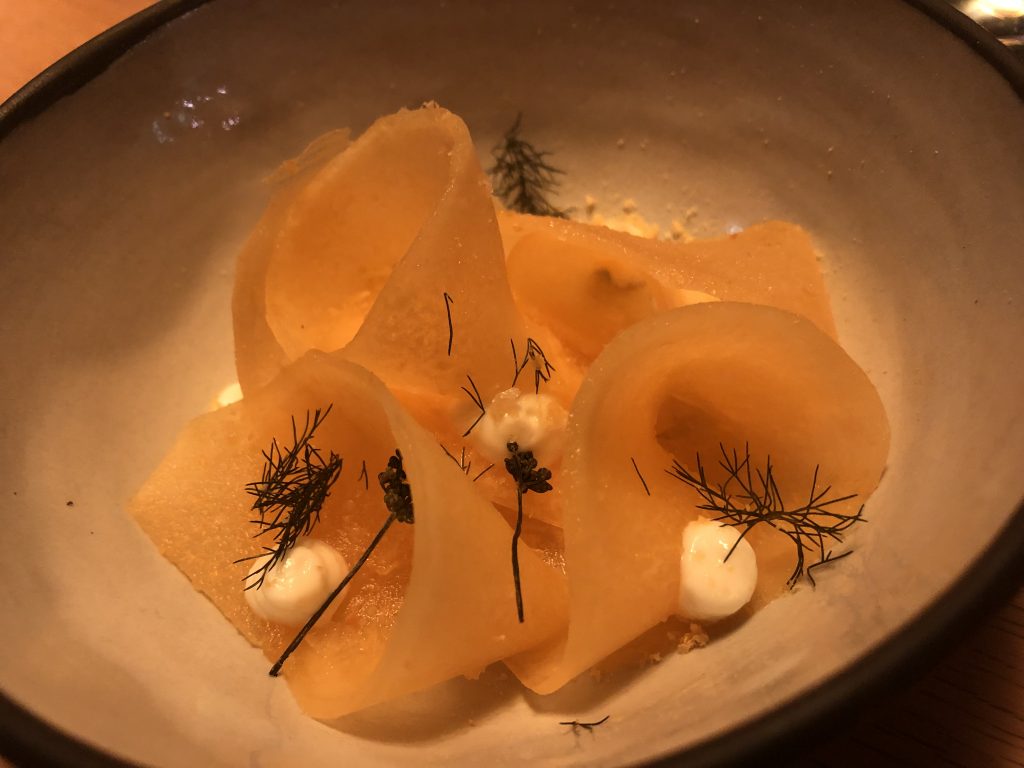
Next was the Prawn Cocktail course. A beautifully presented prawn mousse served with crunchy fried prawn heads. A very flavorful and fun to eat
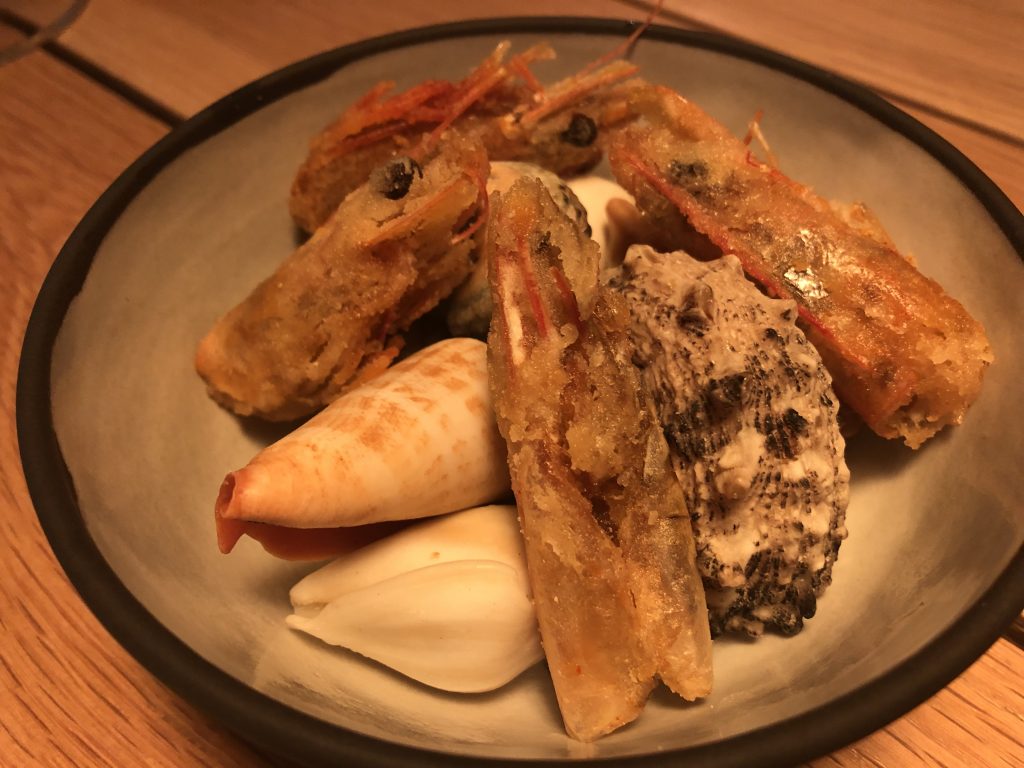
We followed the menu along as the courses were presented at the table. The food and their explanations certainly stoled the show. This environment is unpretentious fine dining at it’s best! Our friends are native South Africans who explained that each courses’ ingredients were drawing on nostalgia, bringing back traditional flavors of their childhood. But these dishes were re-interpreted by Bertus’ outlook on evolving himself and his food.
Smoked Hake Cheesecake,
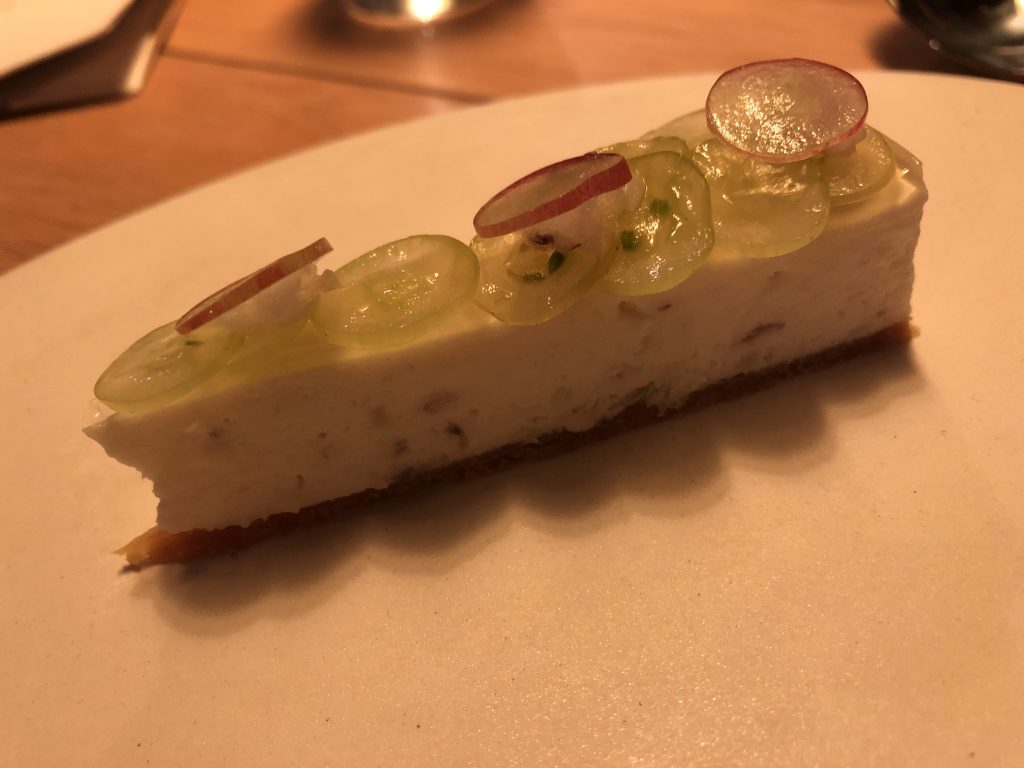
There were a number of items that required translation; including the next course, Opsitkers: In the past, especially among rural Afrikaners this was a candle that was burned to determine the length of a sweetheart’s visit. The bread course consisted of house-made Braaibroodjie, Suurdeeg, (sourdough) served with home-made butter and that chef’s trademark candle made of beef fat that is lit at the table and melts into a puddle perfect for dipping the bread into!
It made for an engaging and amusing course as we took turns dipping and devouring up the luscious candle.
Braaibroodjie (barbeque sandwich in Afrikaans) is the South African version of a grilled cheese sandwich that is traditionally served at the end of a braai, a South African barbeque.
Duck Ham, Radish, Soet Mosterd and Tamatie Smoortjie. More translations were necessary. Duck Ham, is a flavorful cured meat similar to p
Radish, and “Soet”, which is a South African word that can describe the action of being good. Not to be naughty, but to be good. “Good Mustard”
and Tamatie Smoortjie is a traditional South African seafood dish topped with a tomato and onion sauce.
Grant it, these were small courses but we were enjoying a lot of food! Next up, Pickled Fish, Yellowtail, Tapioca, Dhanya. Yellowtail kingfish or great amberjack is a large fish found in the Southern Ocean and Dhanya is a flavored spice blend The seeds or leaves of the aromatic plant coriander (Coriandrum sativum).
We were having a lovely time and the service was superb! Our hostess Colette Deg was very attentive and intuitive, but never intrusive! The restaurant is relaxed with an open kitchen. We were able to visit while keeping a fascinated eye on what was being prepared in the airy ambiance of the kitchen nearby.
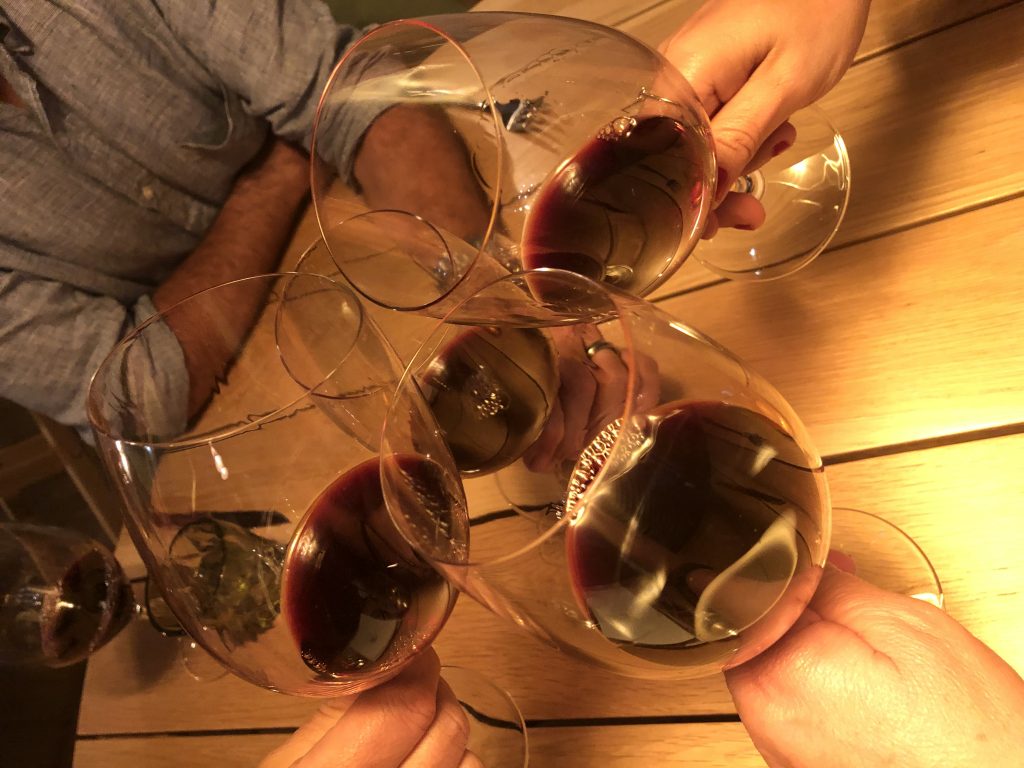
The welcoming service and delivery of the dishes
This meal might look expensive but actually was very affordable compared to course meals you would pay for in the United States, and other places around the world. We literally spent hours there. R850 pp = $60 pp roughly. It is not just a meal, it’s an experience! But it didn’t end there. Dessert, you ask? We were presented Bazaar Pudding. It was a flavorful pudding topped with
Next came this beautifully creative dish called “Seasons of Oak” Pear, Rooibos, Chocolate. A lovely pear, Rooibos (meaning “red bush” an evergreen South African shrub of the pea family. An infusion of the leaves of the rooibos plant drunk as tea has been popular in Southern Africa for generations.) and a delicious piece of chocolate that had been cut to match the plates decoration of actual Oak leaves.
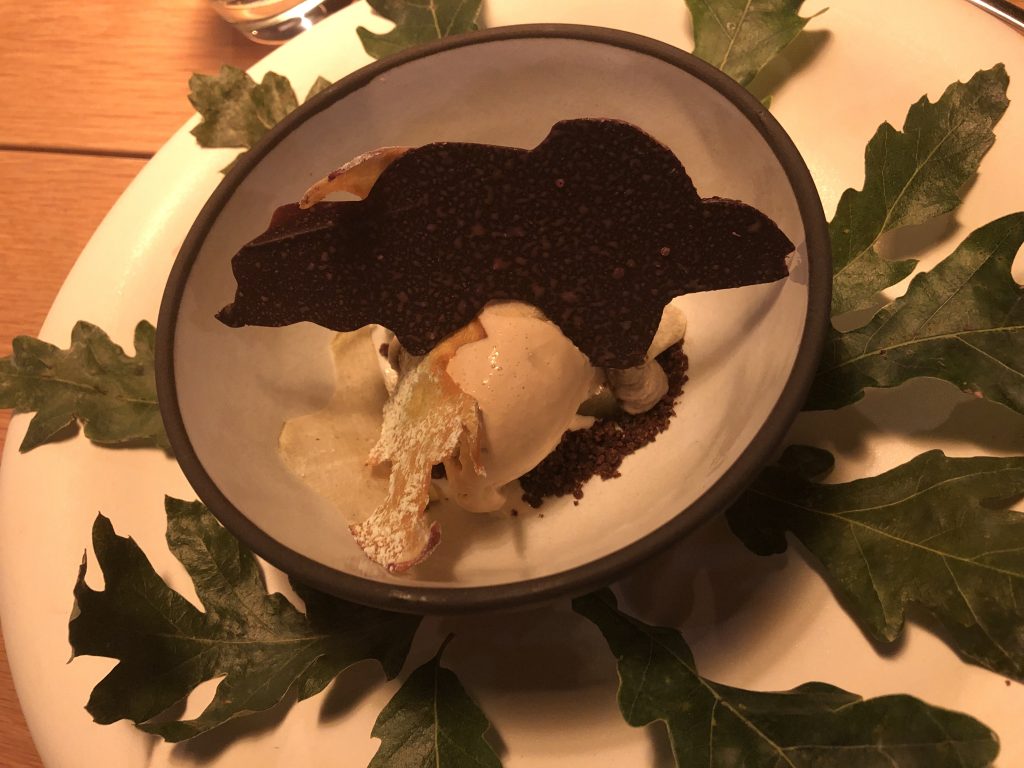
But wait… there’s more! “Ouma’s Pantry” (Ouma means grandmother in Afrikaans) An array of koeksisters, a traditional Afrikaner confectionery made of fried dough infused in syrup or honey. Melkterts, Afrikaans for “milk tart” a South African dessert consisting of a sweet pastry crust containing a creamy filling made from milk, flour, sugar
Each decadent truffle morsel was carefully blended for supreme smoothness, then gently dusted with premium cocoa to create a soft, sophisticated finish and were the perfect companion to the fine coffee that concluded our meal. There was no way we could fit in the offered Local Cheeses from the Trolley for a mere R 120 = $8.50.
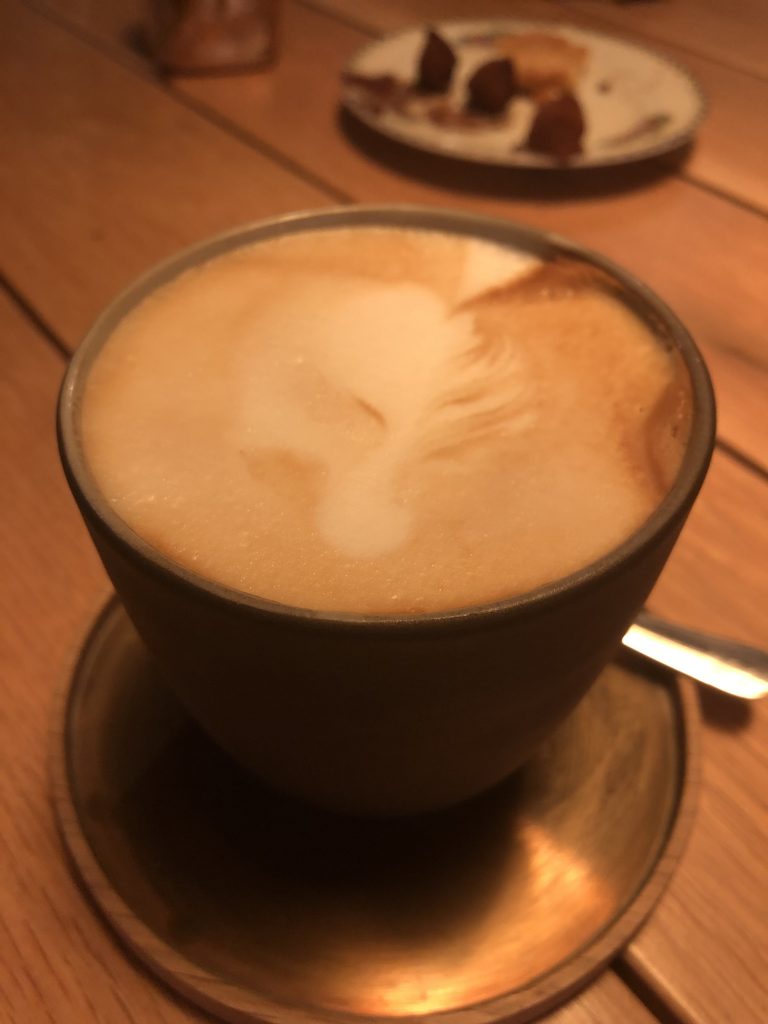
Complementary: A thoughtful touch! As we departed around 11 pm, they surprised us with a take-home goodie bag containing a small box of home-made granola for the next mornings’ breakfast and a copy of the evening’s menu.
Like everything else he does, Chef uses only the finest ingredients in the granola. Almonds, rolled oats, sunflower seeds, pumpkin seeds, butter, sesame seeds, honey, sunflower oil, cinnamon, and orange aroma.
No one left hungry and the entire fortune of the experience will remain in our memories forever. I cannot recommend this experience highly enough! This restaurant should be recommended to locals, as well as to all International visitors!
Bon appetit!
~Chris
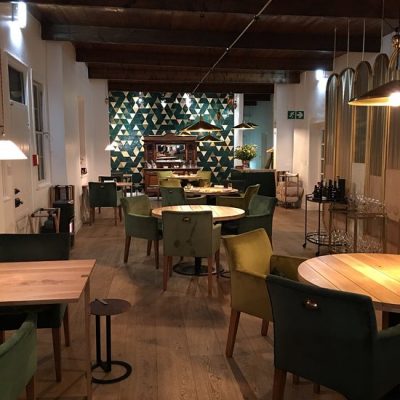
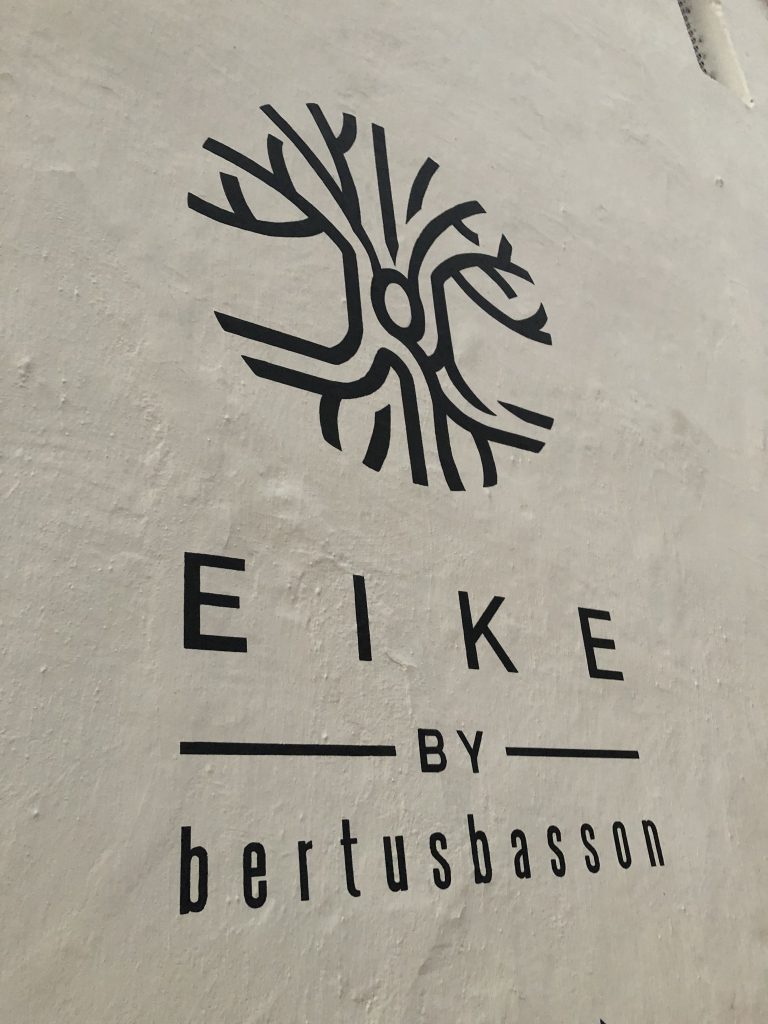
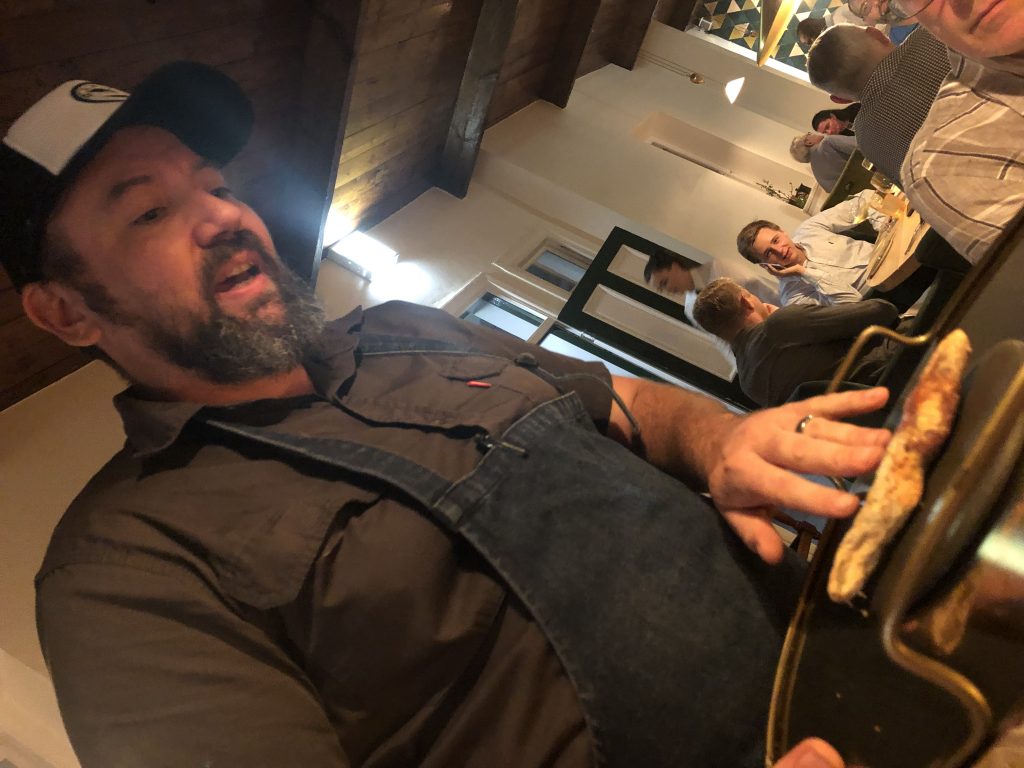
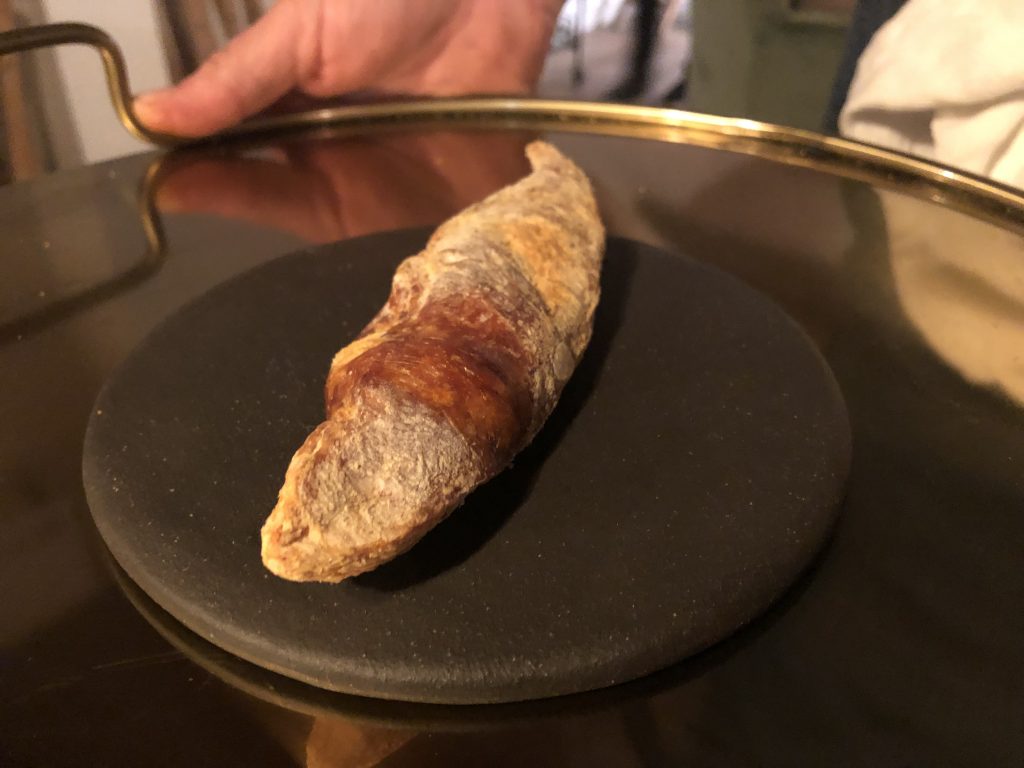
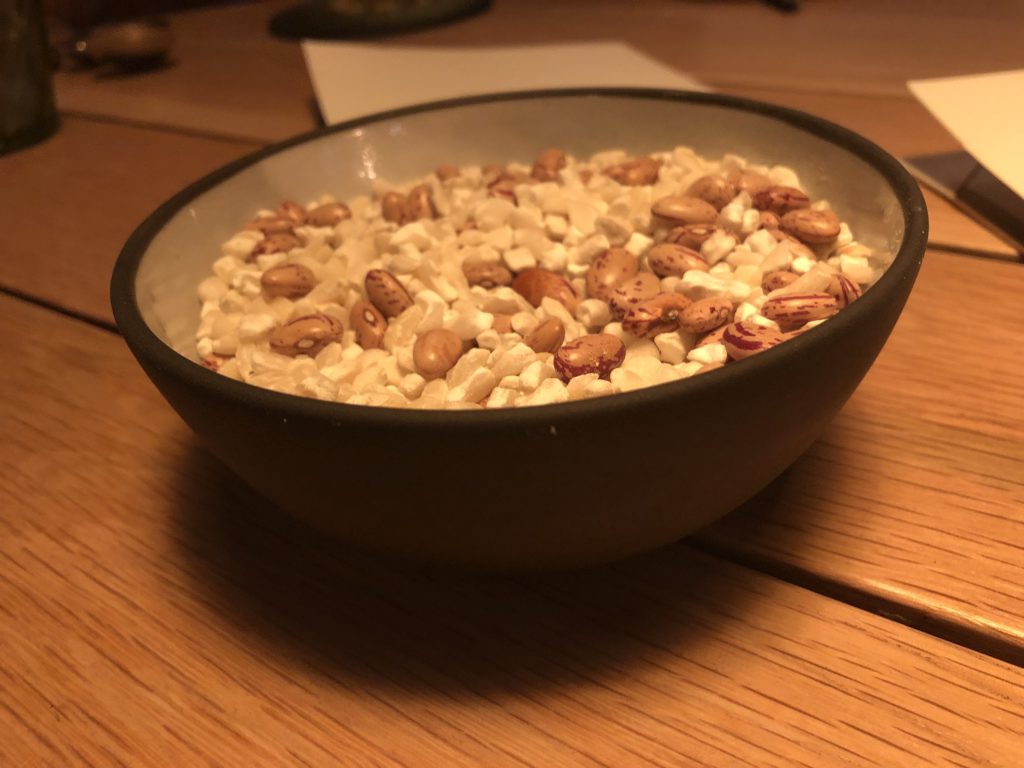
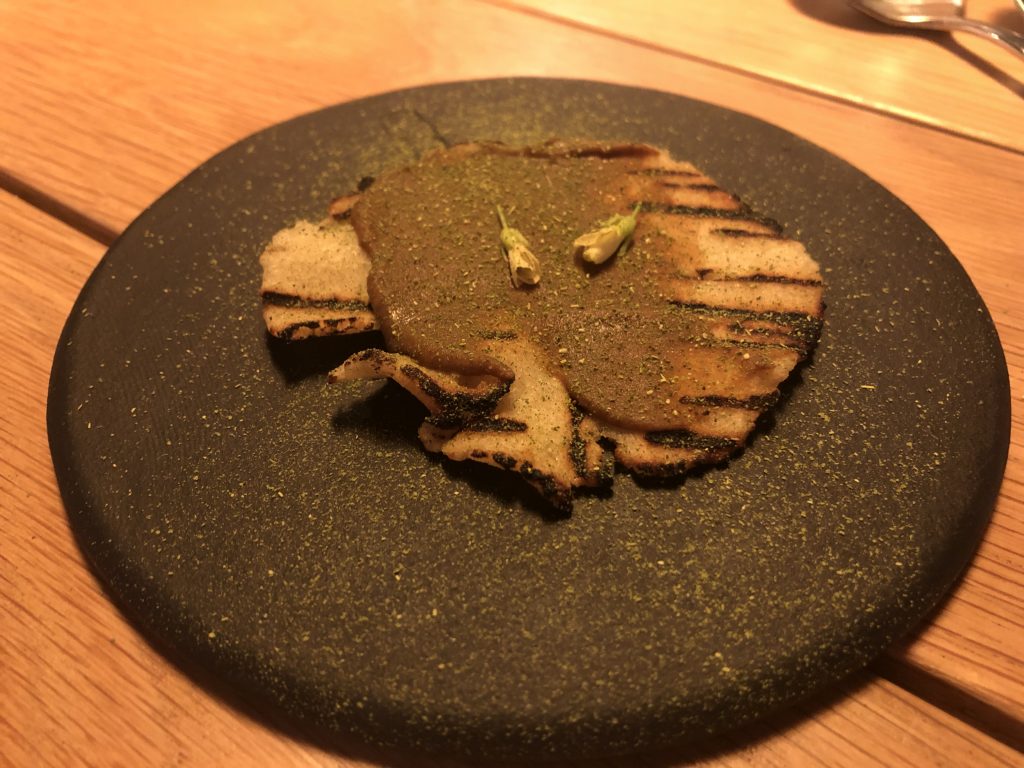
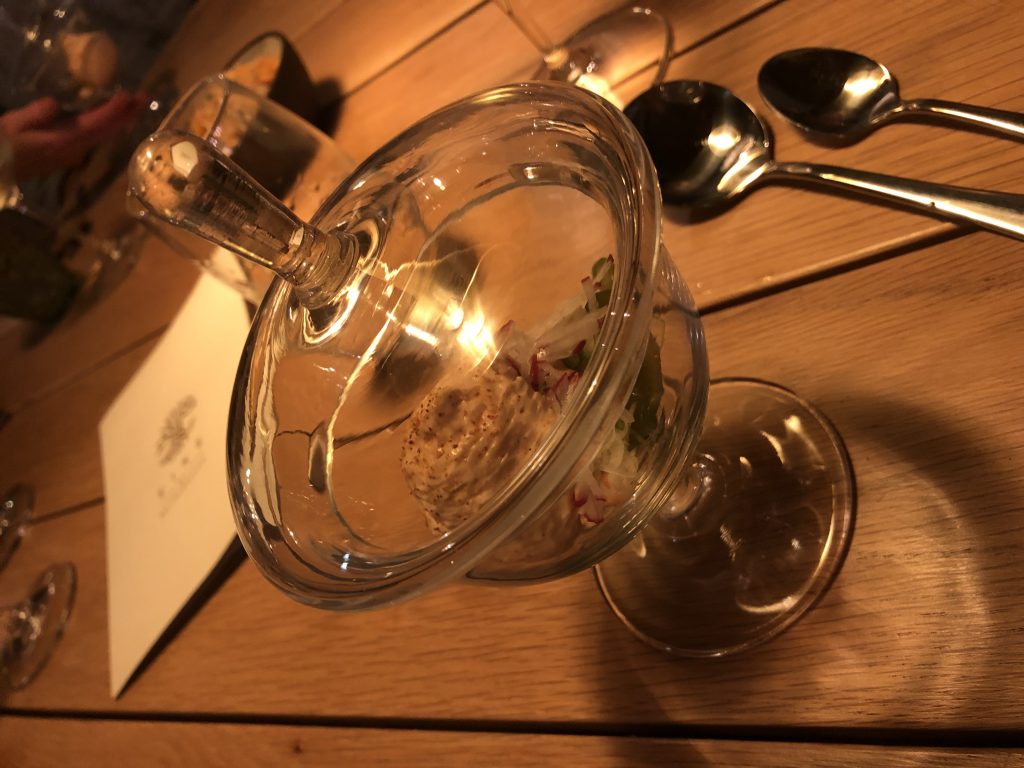
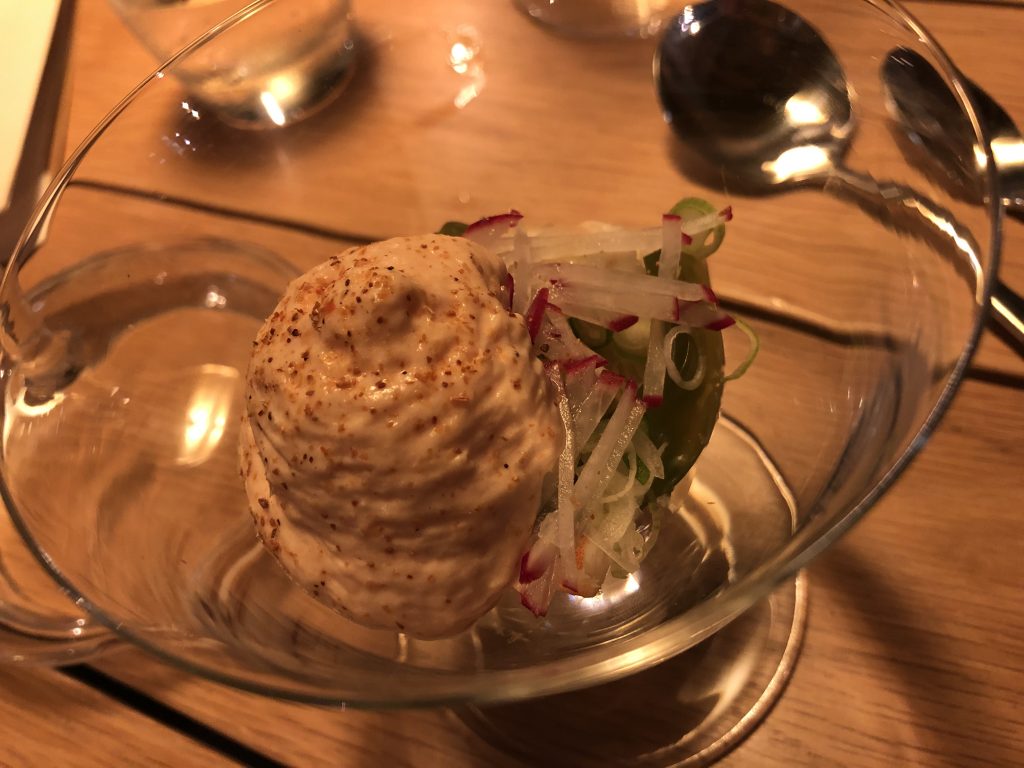
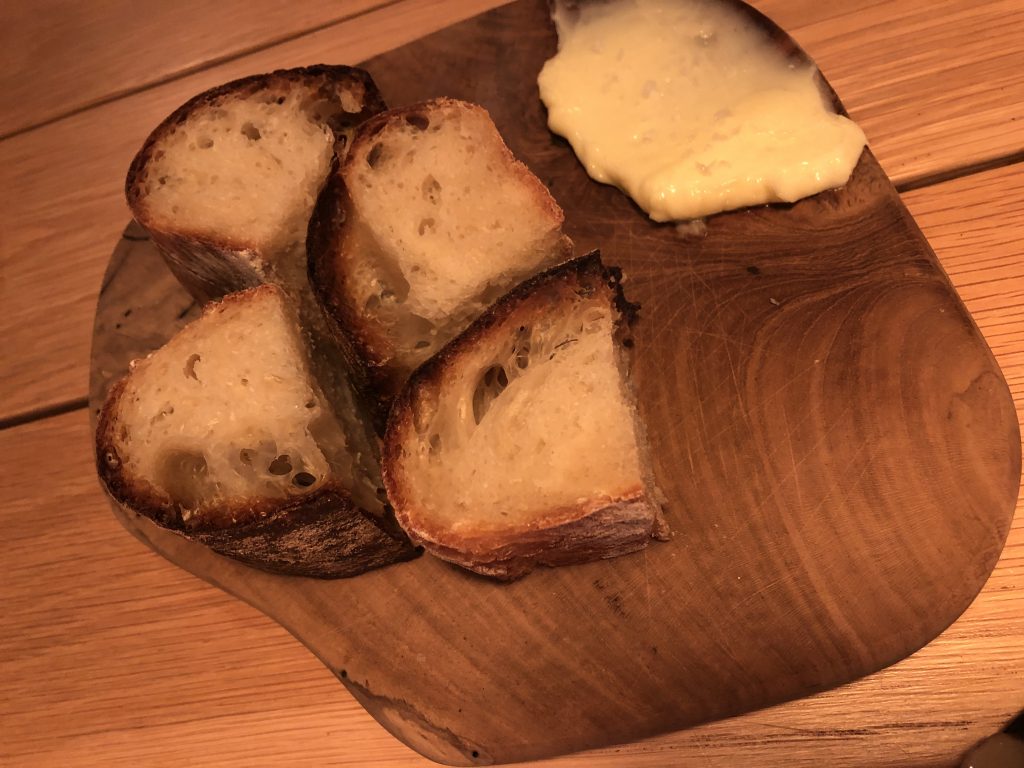
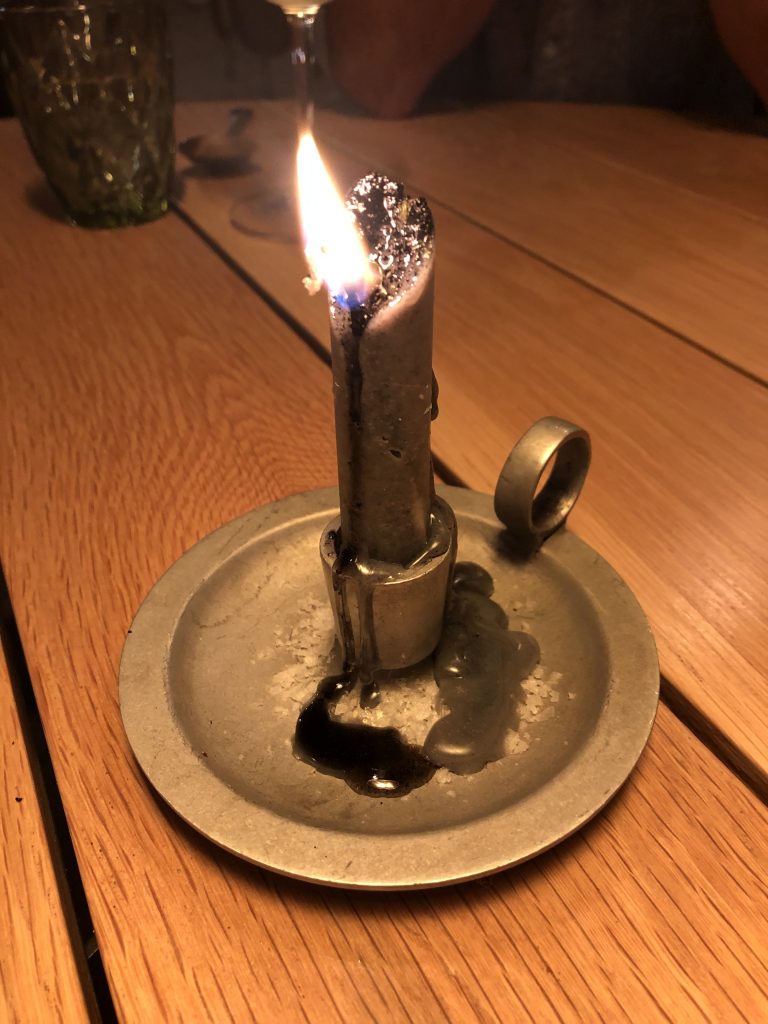
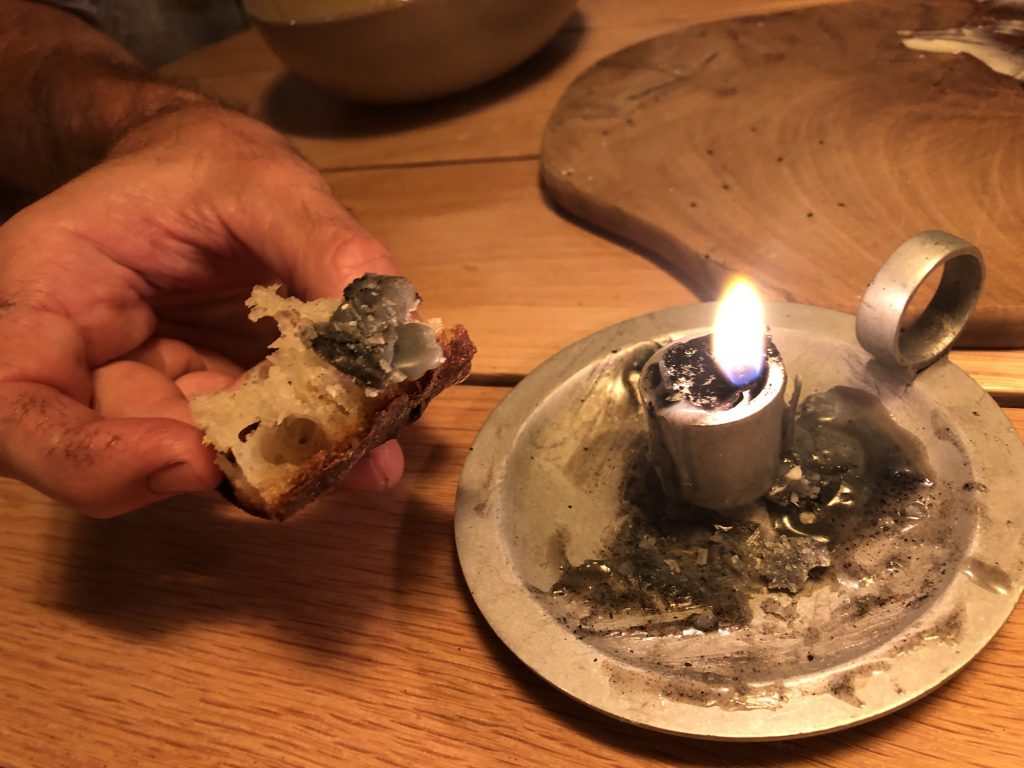
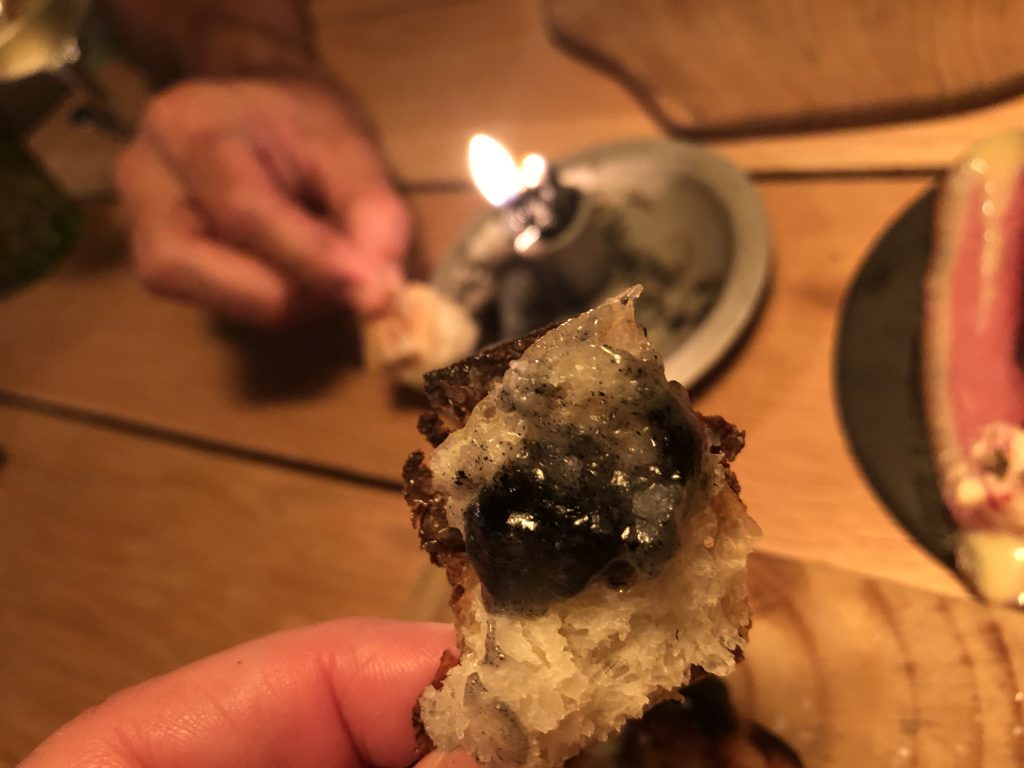
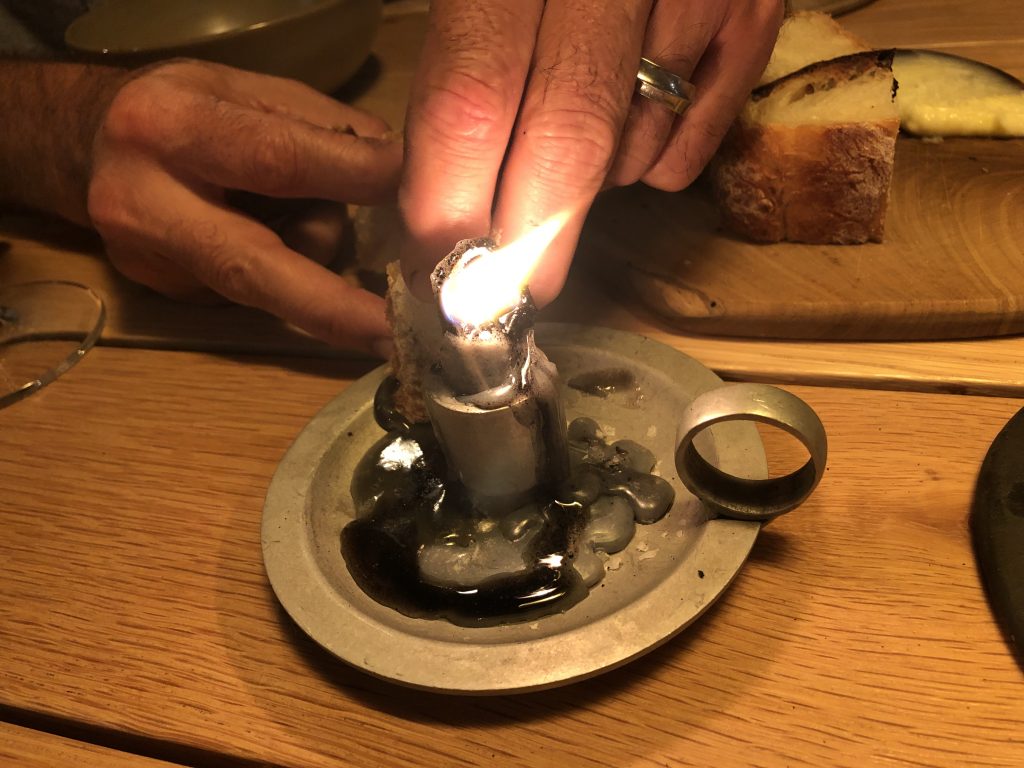
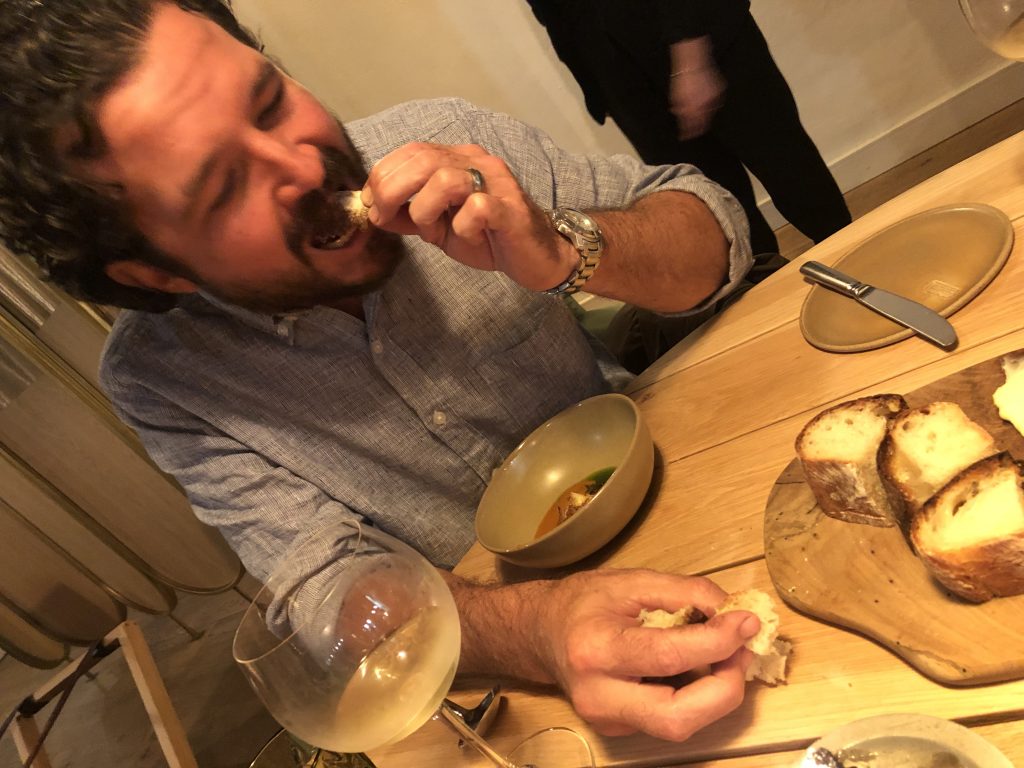
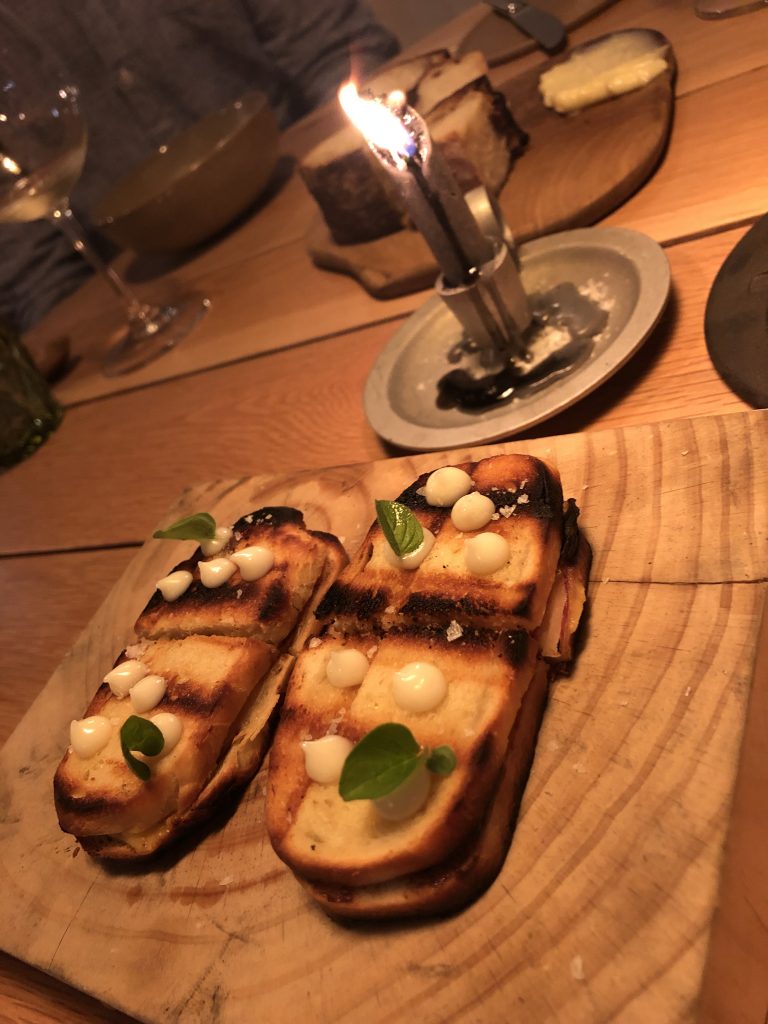
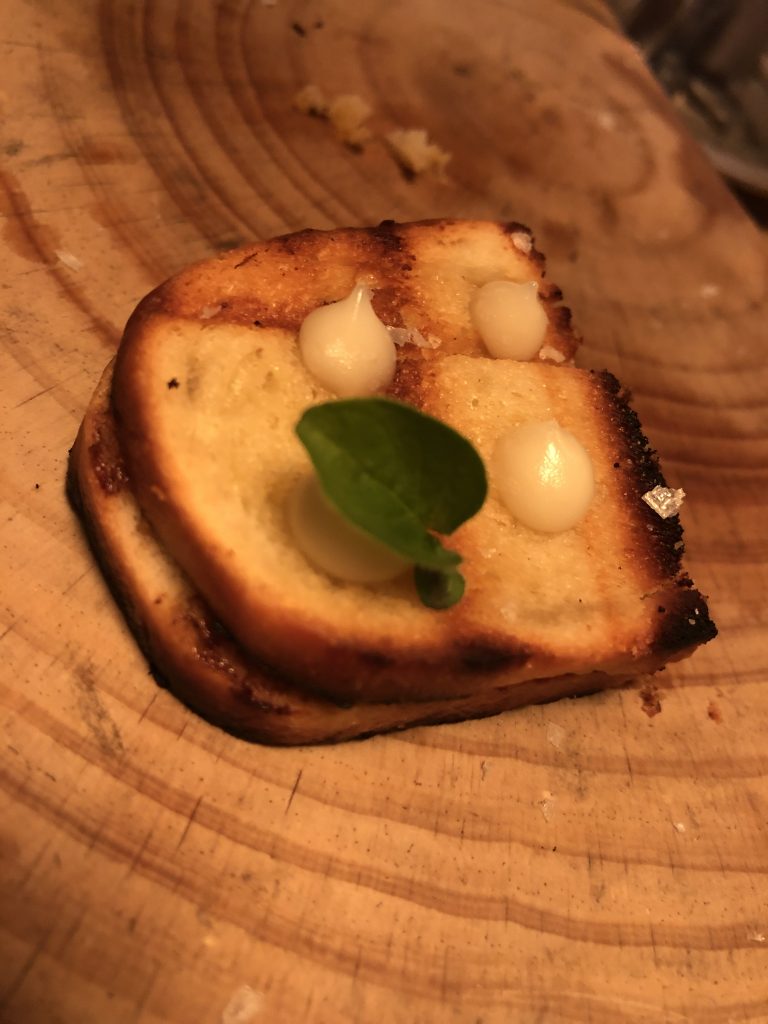

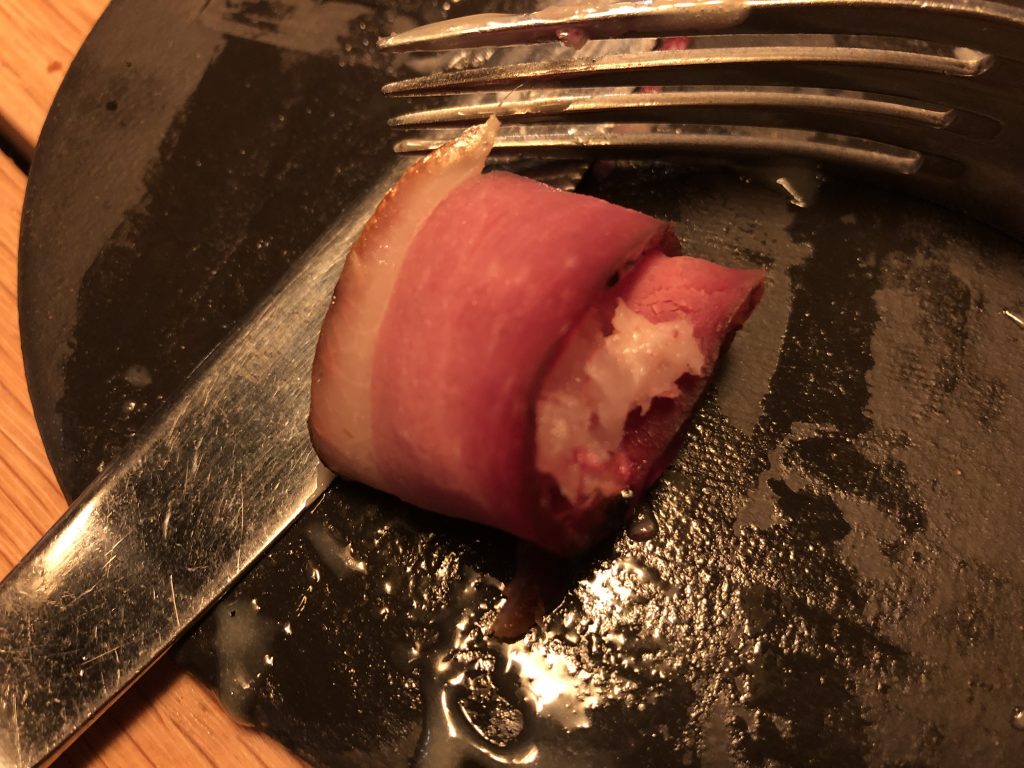
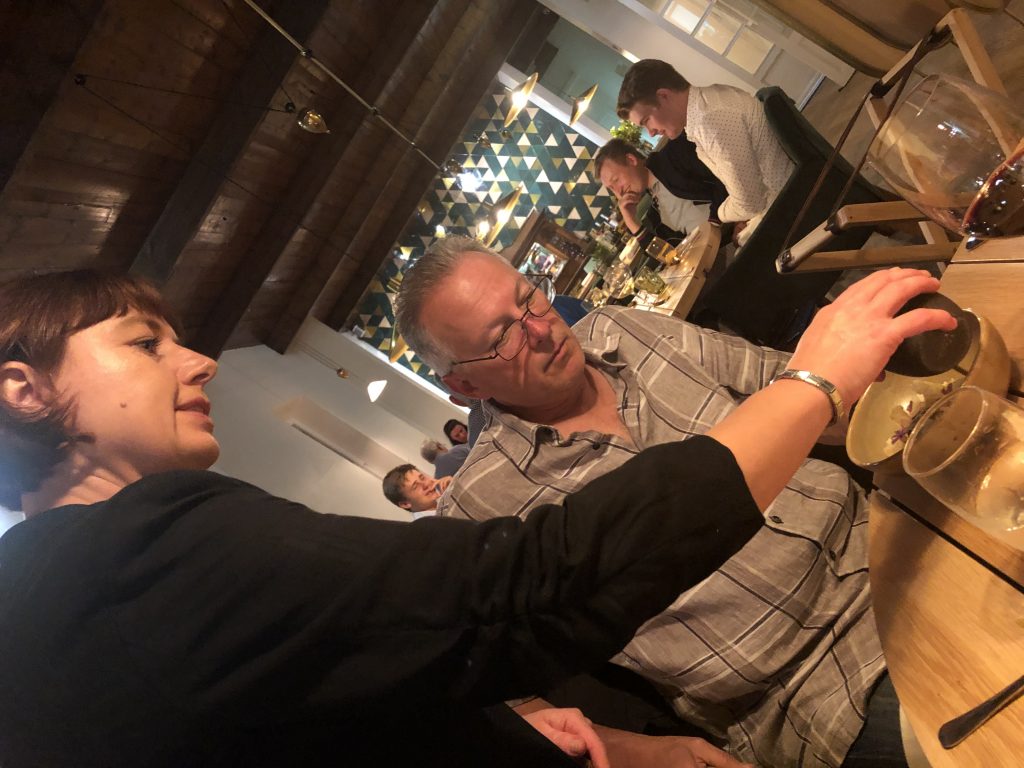
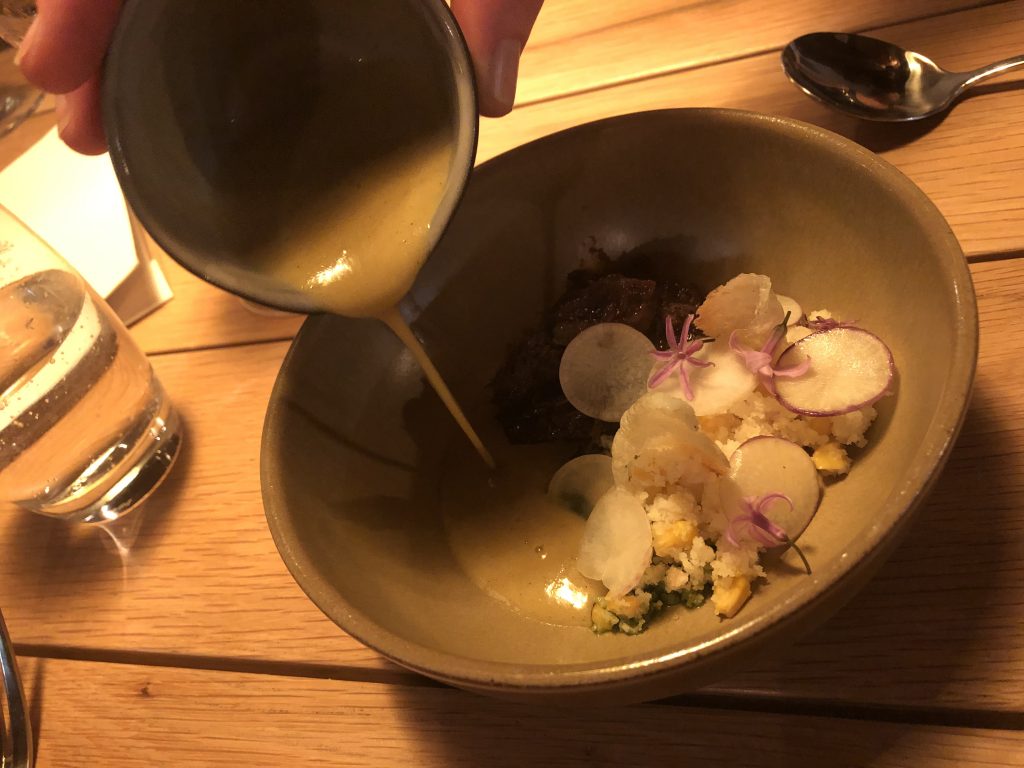
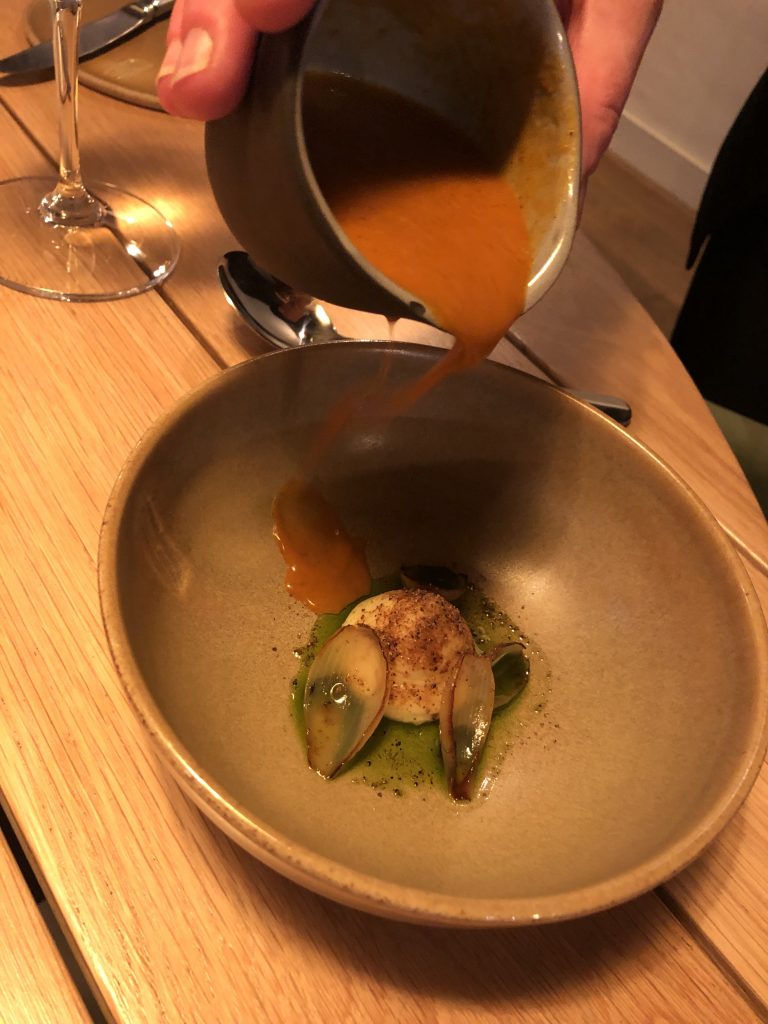
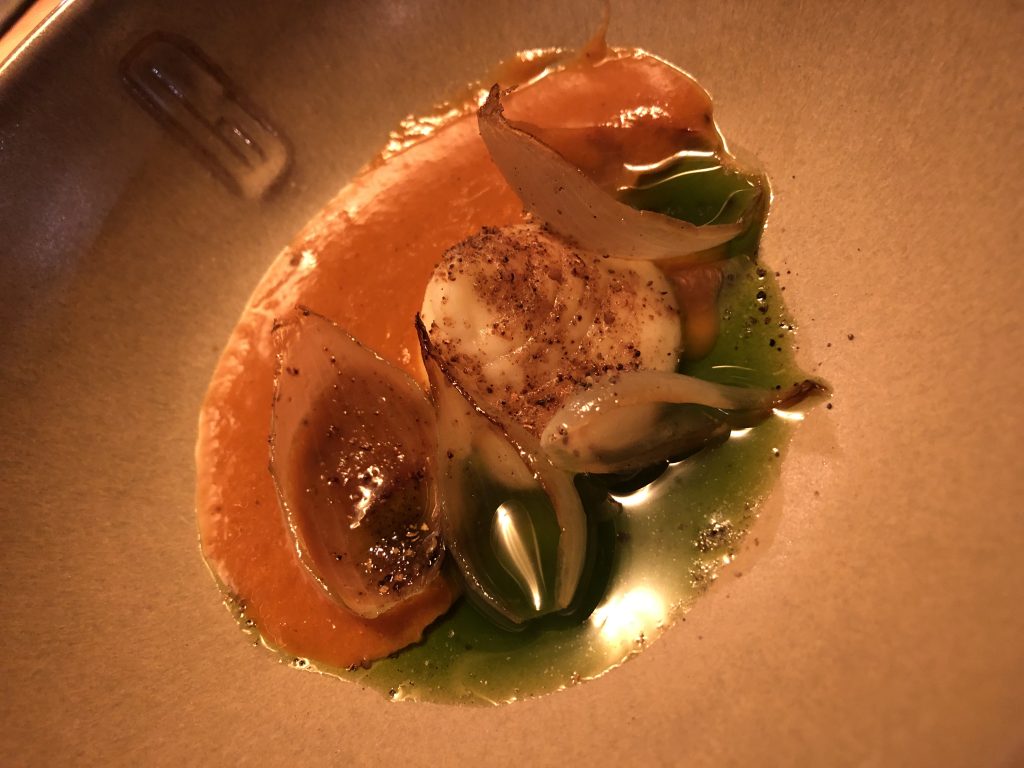
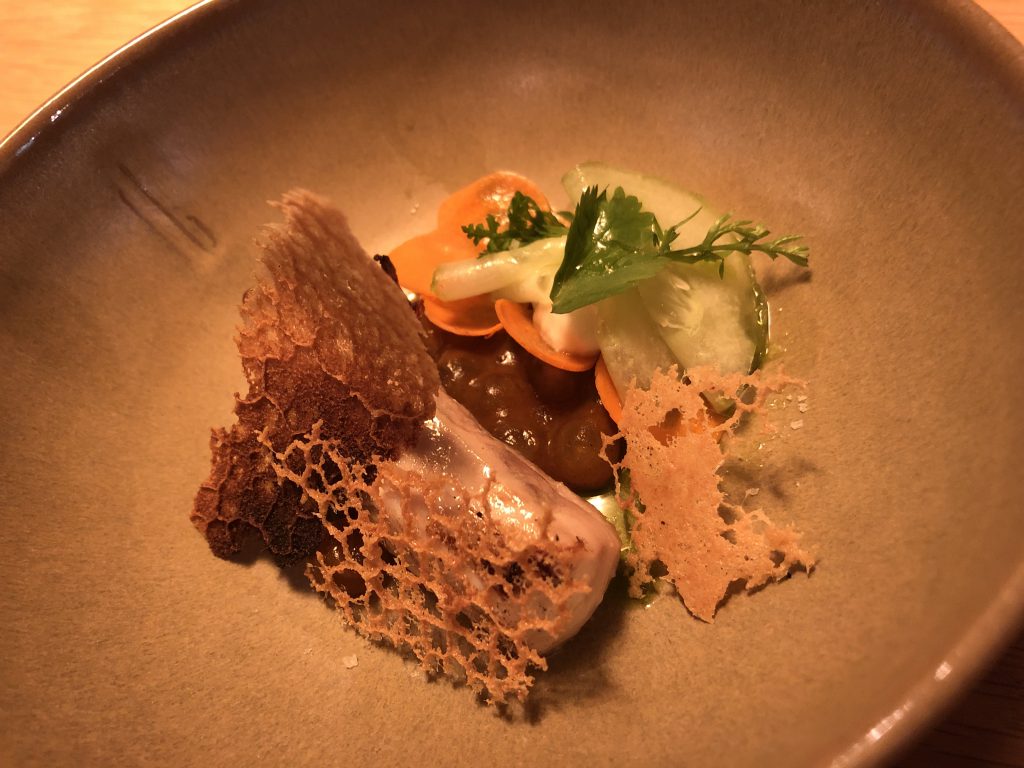
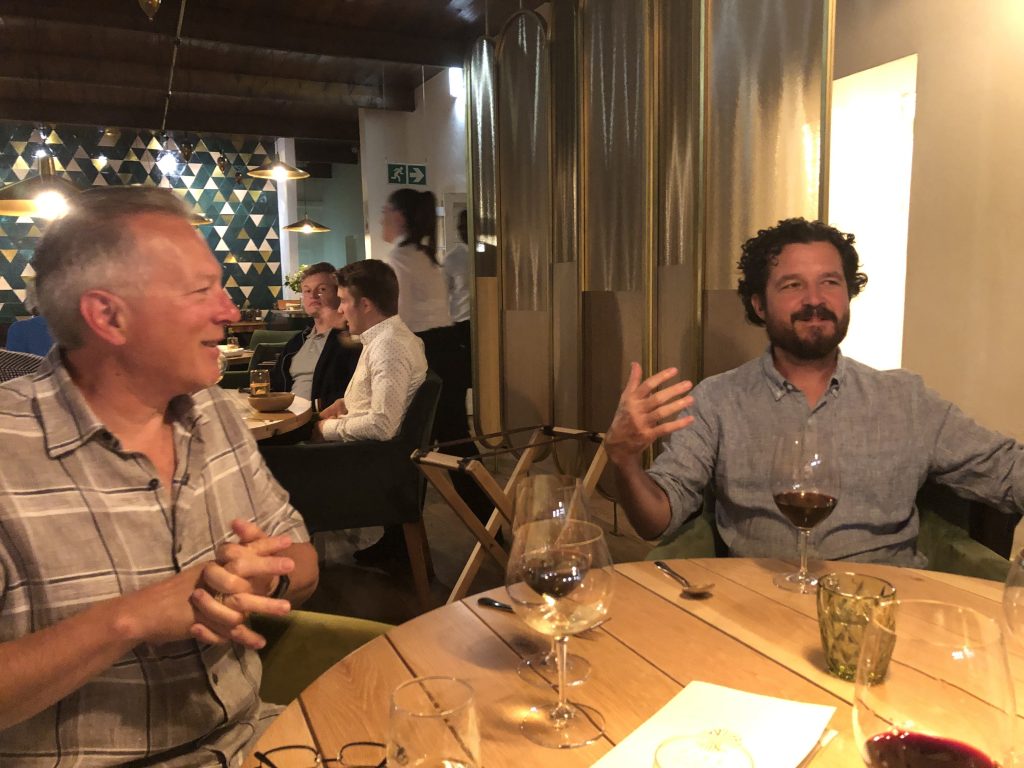
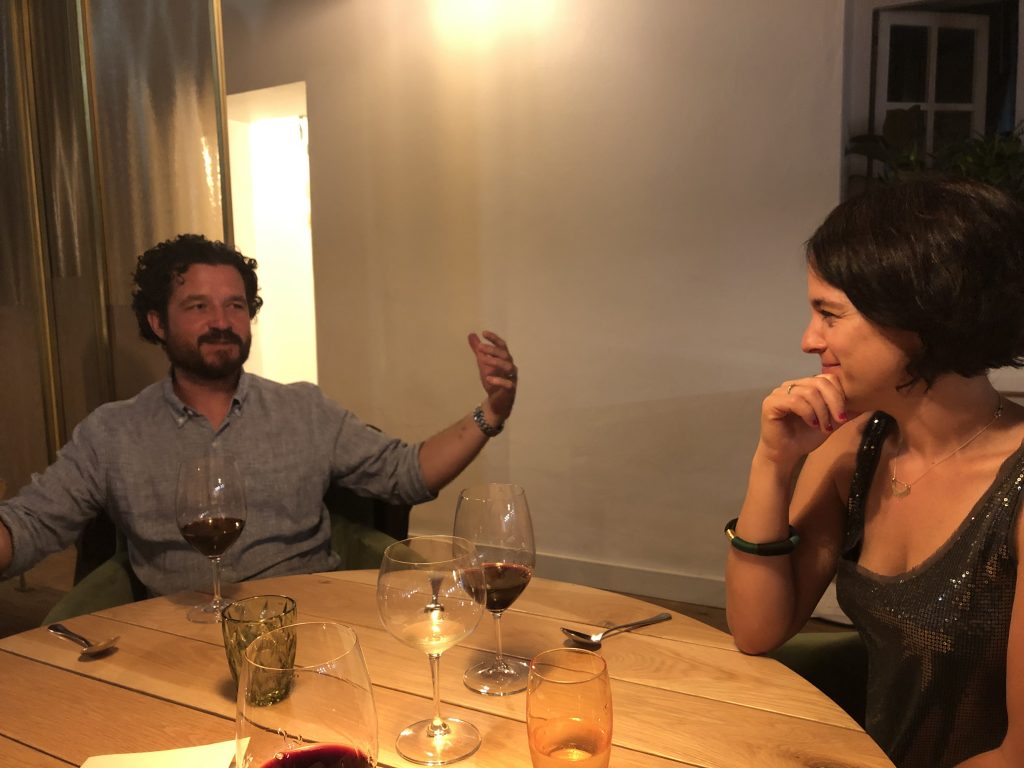
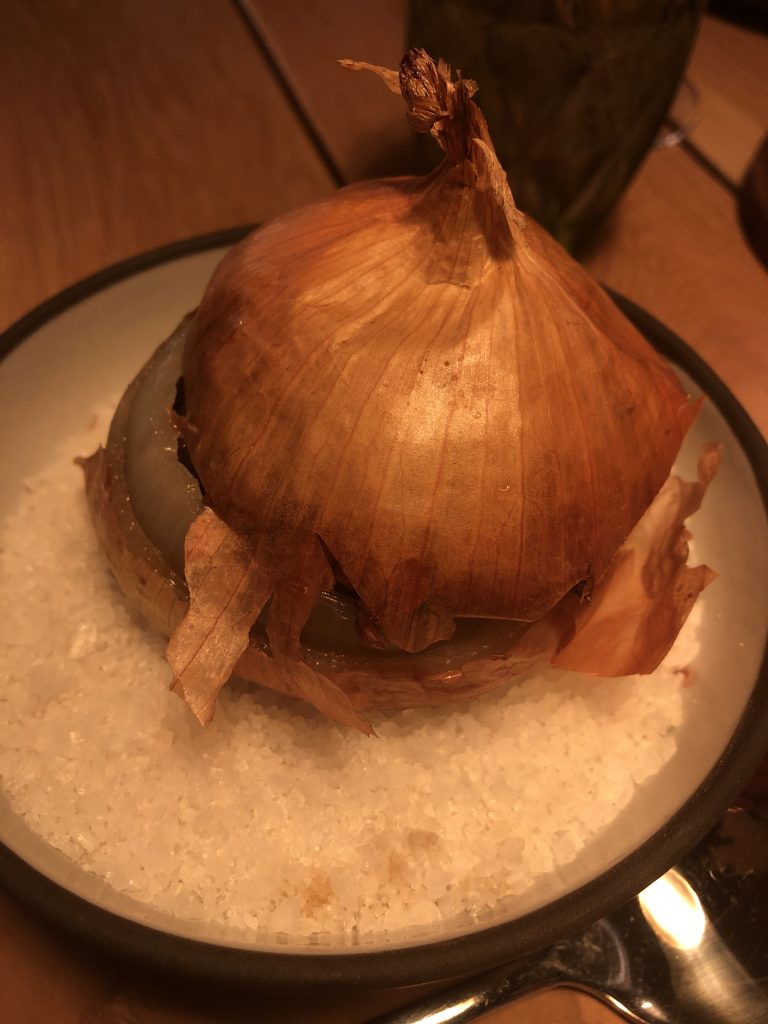
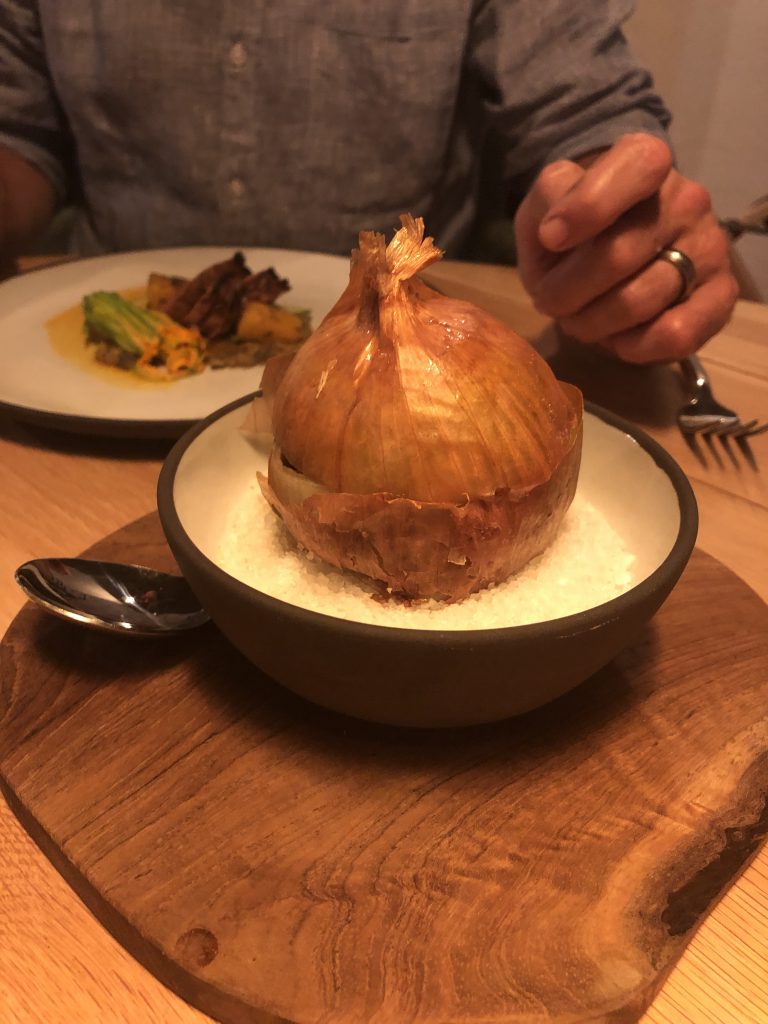
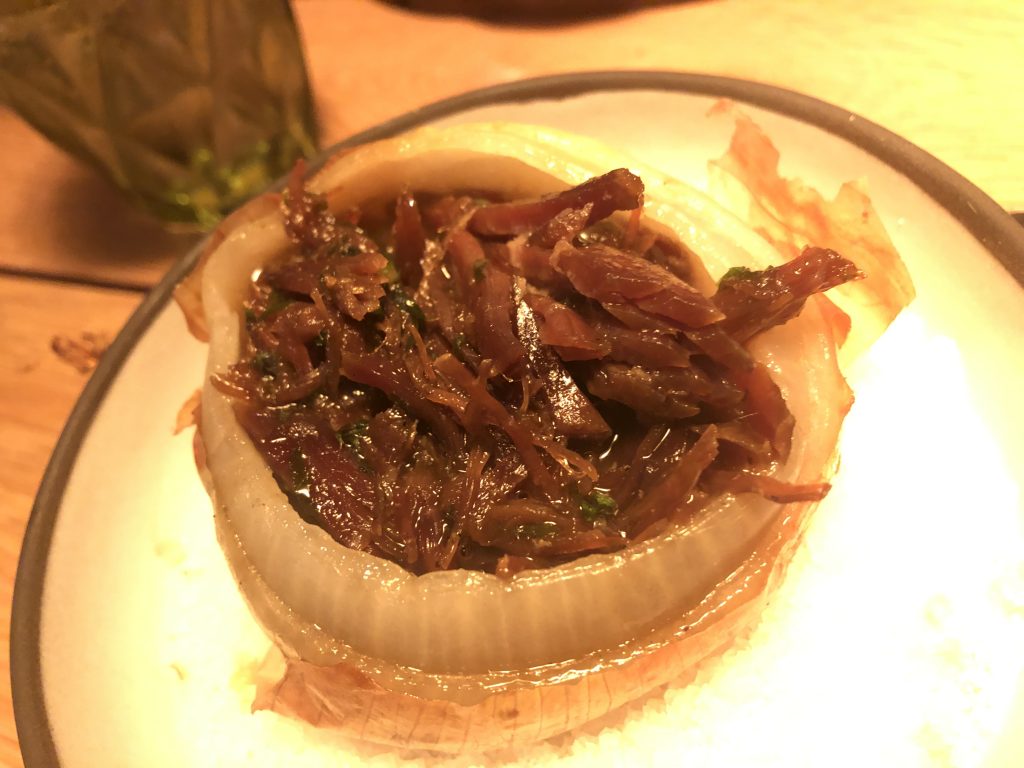
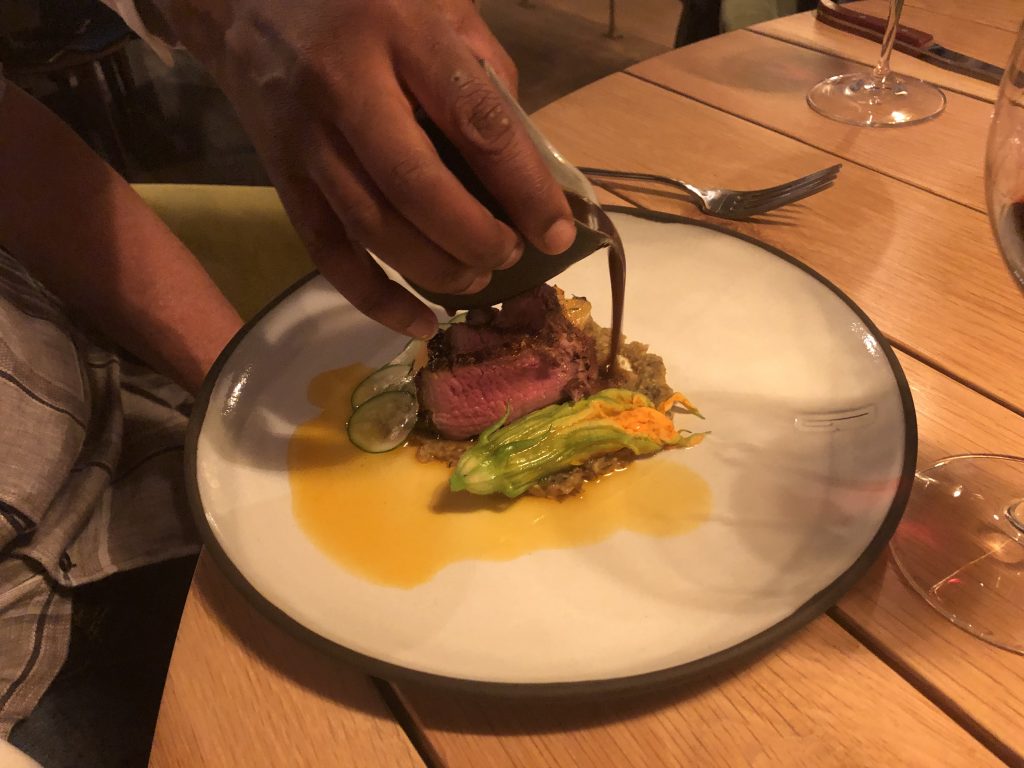
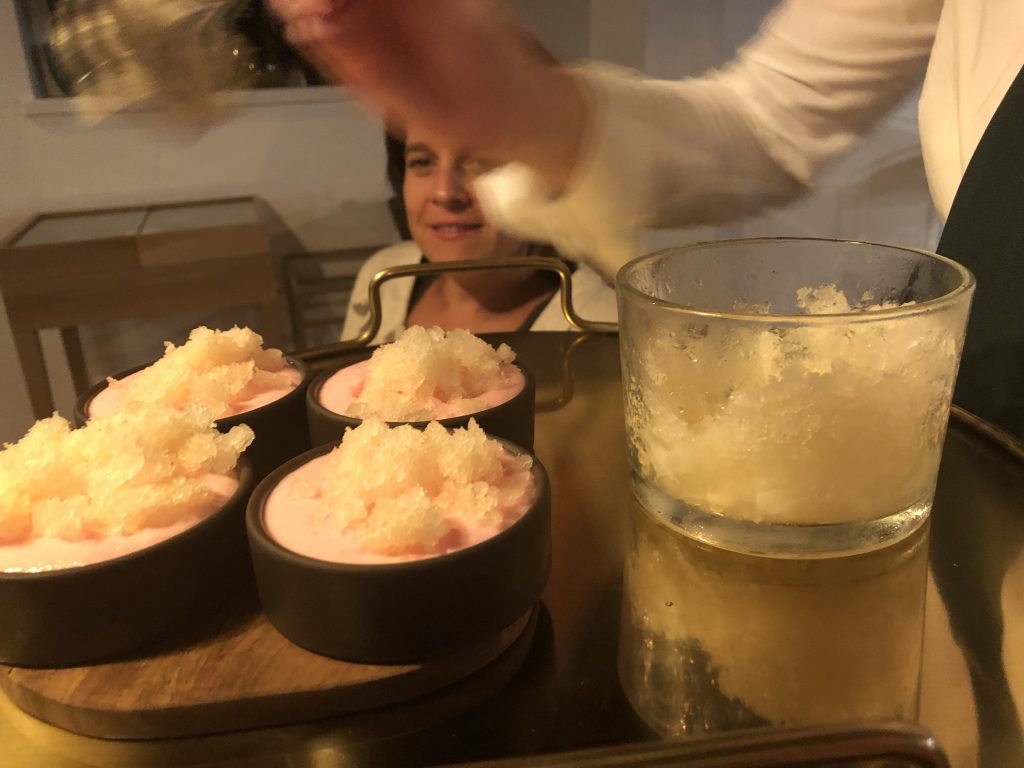
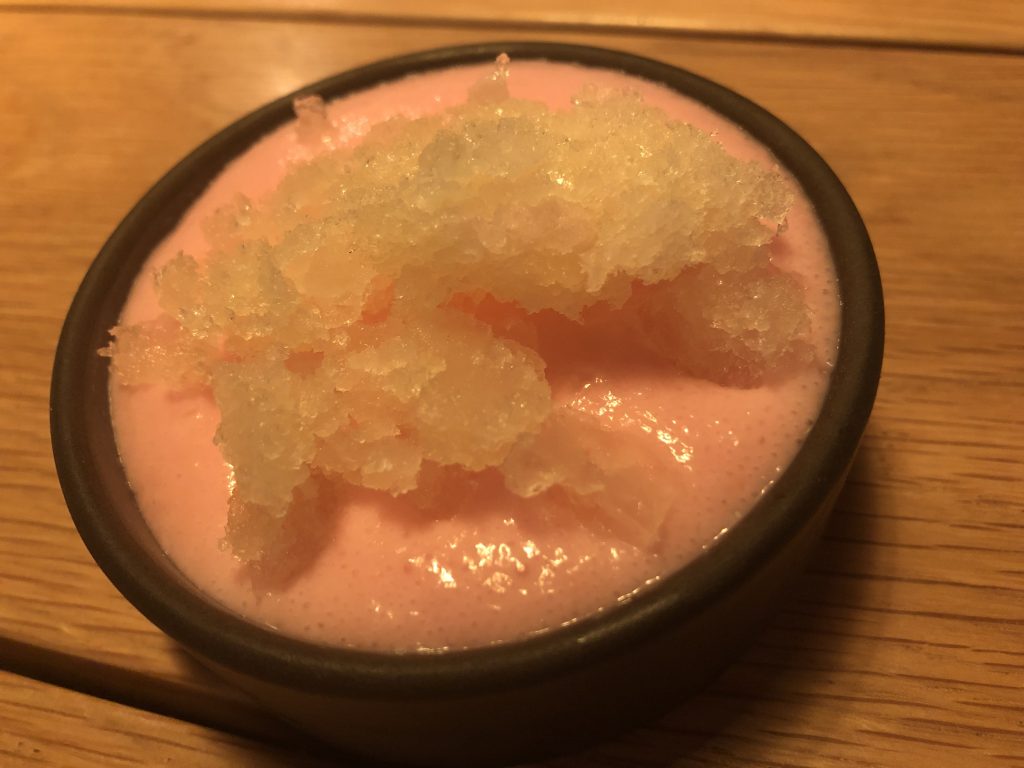
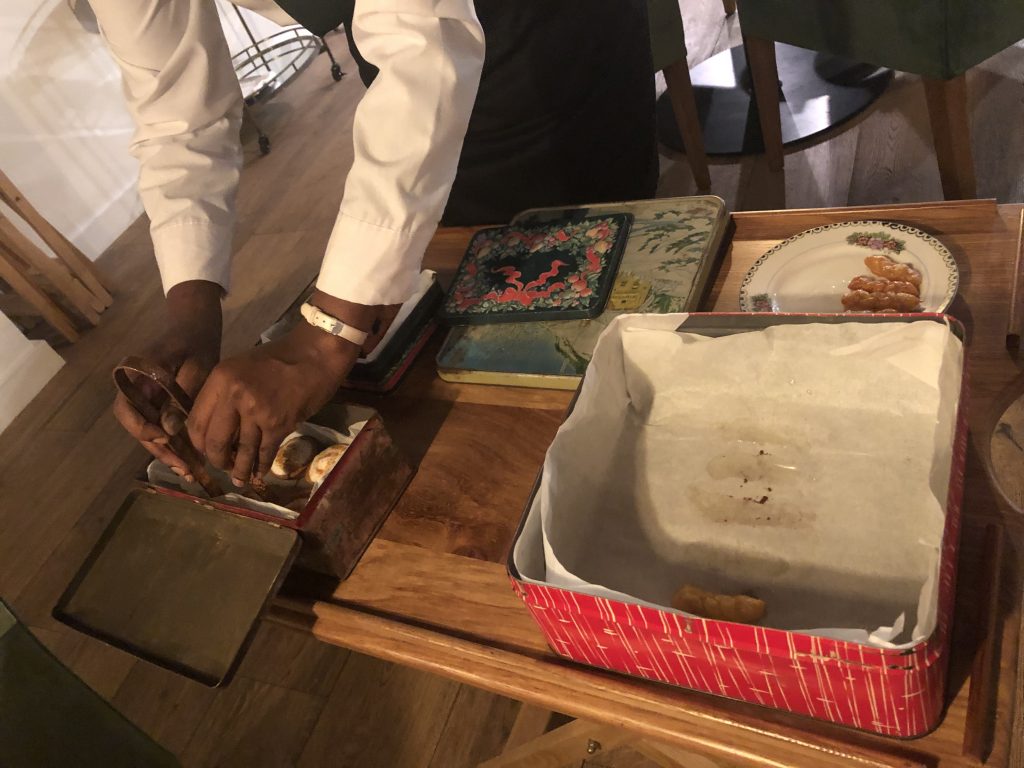
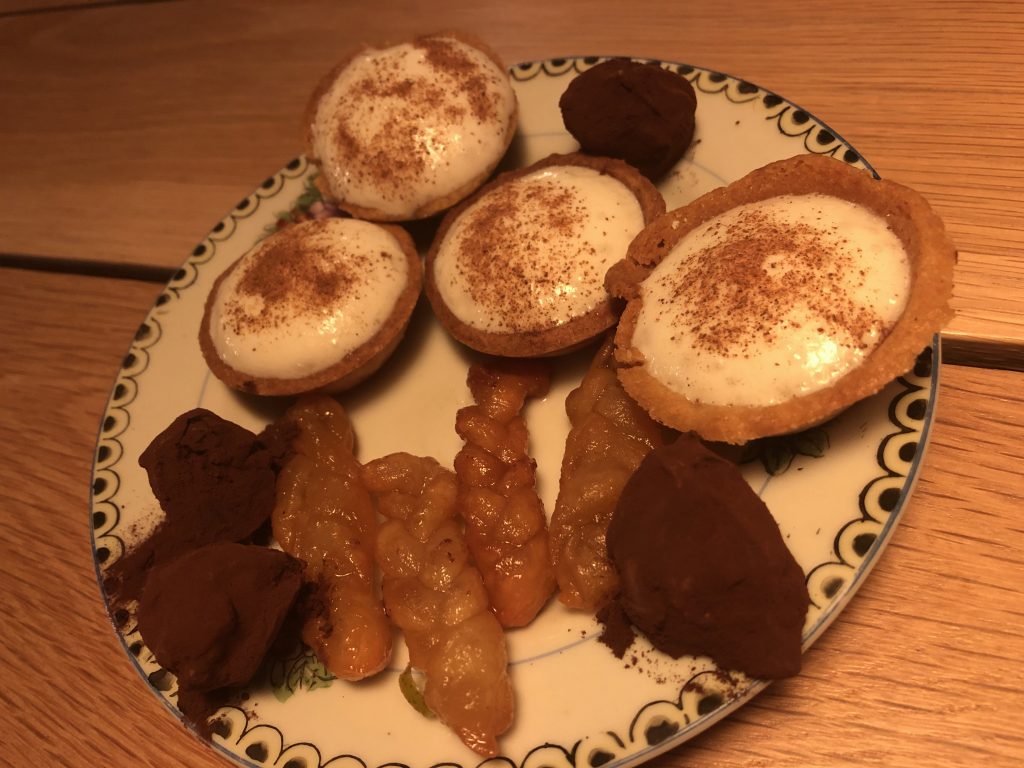
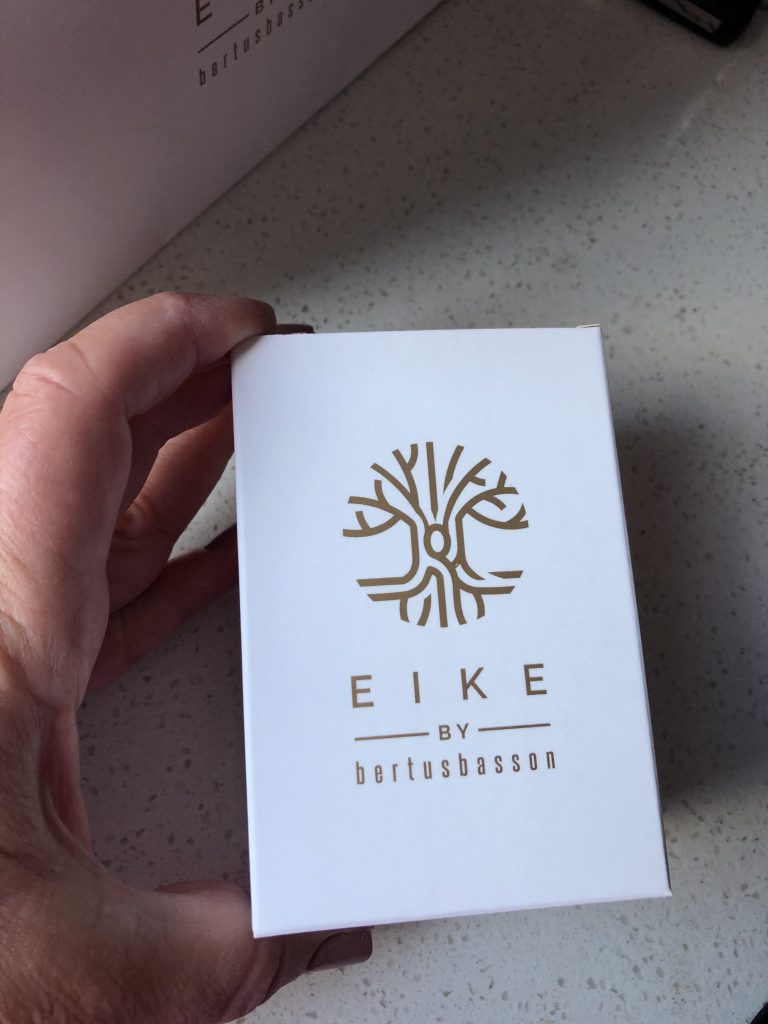
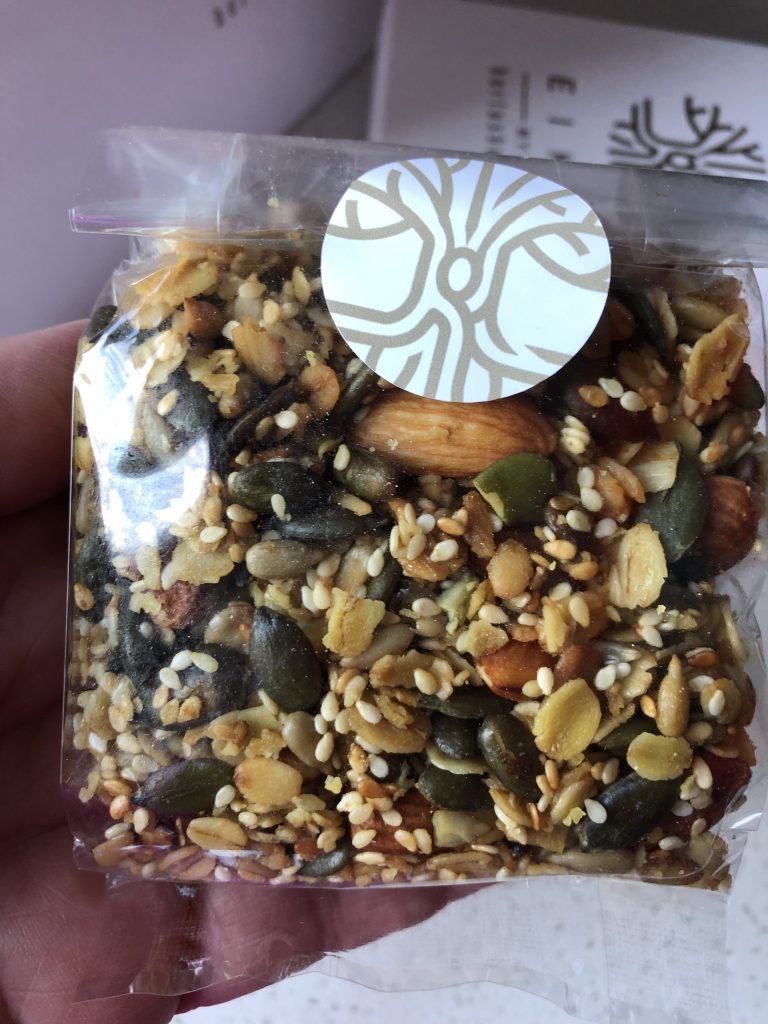

Great representation, Chris.
Thanks Willem! Hope you had or will have a chance to dine here in the future! Cheers!